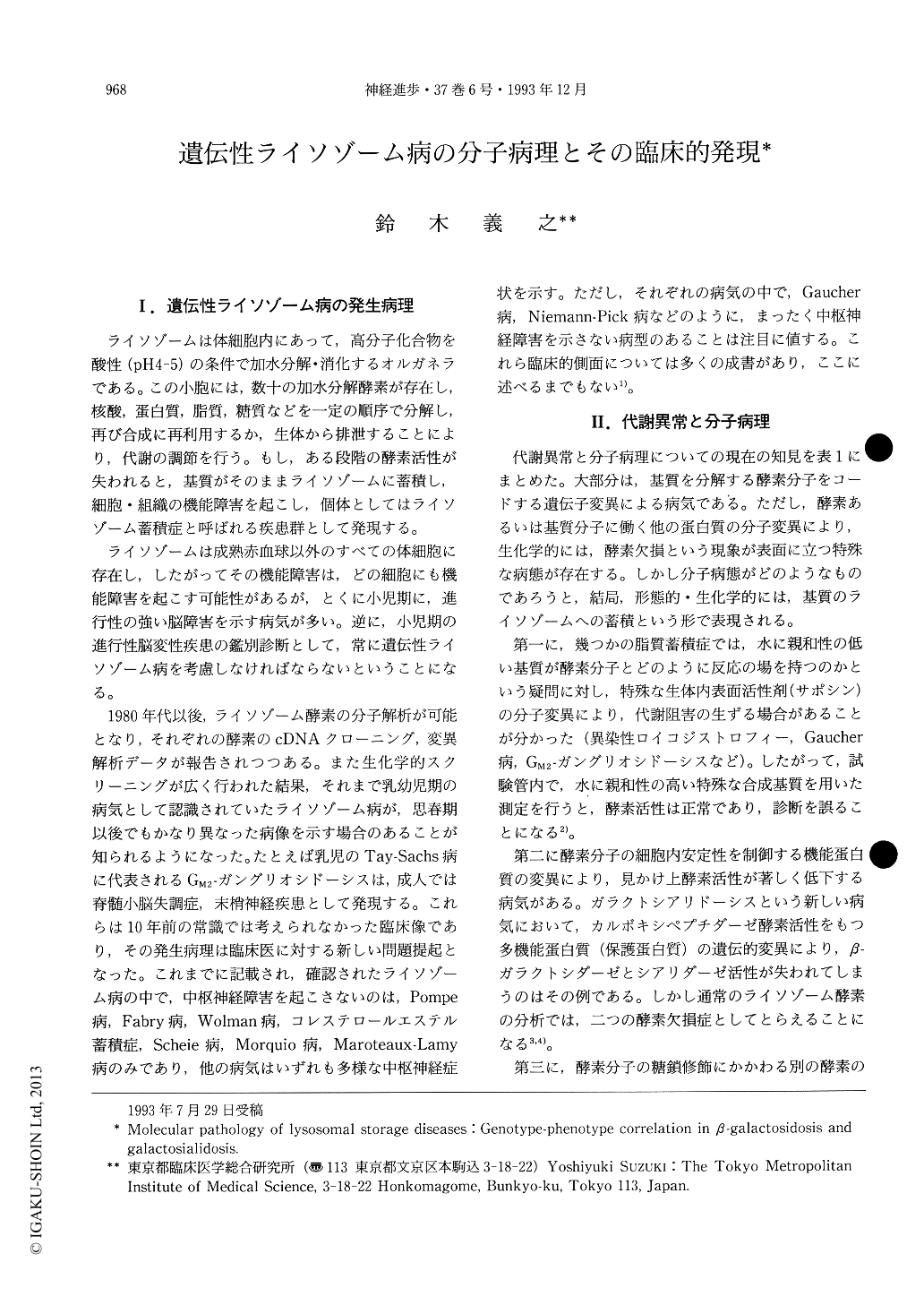Japanese
English
- 有料閲覧
- Abstract 文献概要
- 1ページ目 Look Inside
I.遺伝性ライソゾーム病の発生病理
ライソゾームは体細胞内にあって,高分子化合物を酸性(pH4-5)の条件で加水分解・消化するオルガネラである。この小胞には,数十の加水分解酵素が存在し,核酸,蛋白質,脂質,糖質などを一定の順序で分解し,再び合成に再利用するか,生体から排泄することにより,代謝の調節を行う。もし,ある段階の酵素活性が失われると,基質がそのままライソゾームに蓄積し,細胞・組織の機能障害を起こし,個体としてはライソゾーム蓄積症と呼ばれる疾患群として発現する。
ライソゾームは成熟赤血球以外のすべての体細胞に存在し,したがってその機能障害は,どの細胞にも機能障害を起こす可能性があるが,とくに小児期に,進行性の強い脳障害を示す病気が多い。逆に,小児期の進行性脳変性疾患の鑑別診断として,常に遺伝性ライソゾーム病を考慮しなければならないということになる。
Lysosomal storage disease is a group of neurometabolic diseases mainly occurring in infancy and childhood. Clinical manifestations are not always uniform for a single disease with mutations in the same gene. Clinical subtypes have been proposed for many lysosomal diseases. At present, the molecular and metabolic basis of each phenotypic expression is not clear, although common mutations have been found for specific clinical forms in some diseases. In this article, some results are reviewed on hereditary β-galactosidase deficiency disorders, β-galactosidosis (GM1-gangliosidosis and Morquio B disease) and galactosialidosis. In both diseases, gene mutations causing various phenotypic expressions have been identified, and clear genotype-phenotype correlations have been established. The pathogenesis, new diagnostic procedures, and possible molecular treatment in some cases are discussed.

Copyright © 1993, Igaku-Shoin Ltd. All rights reserved.


